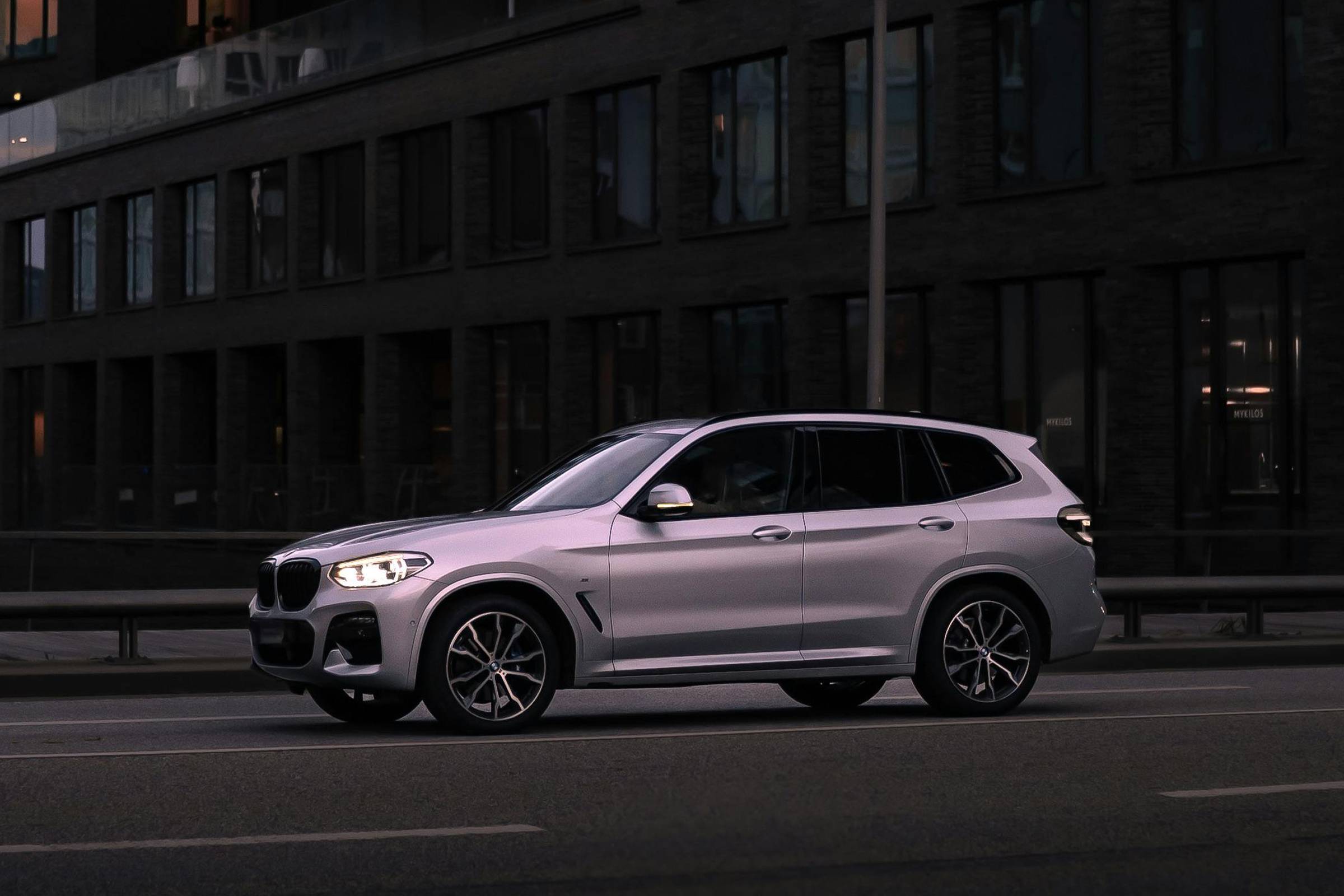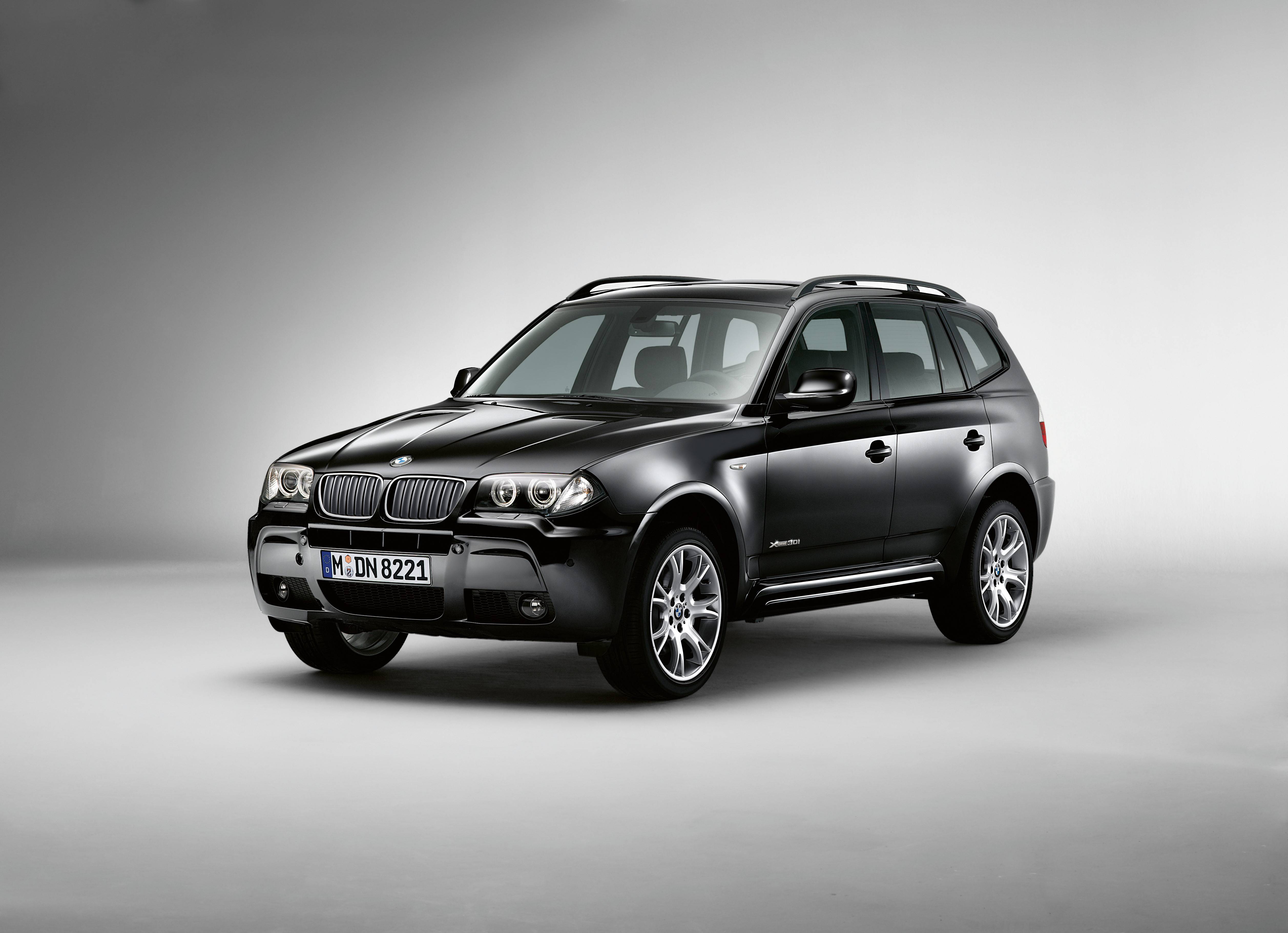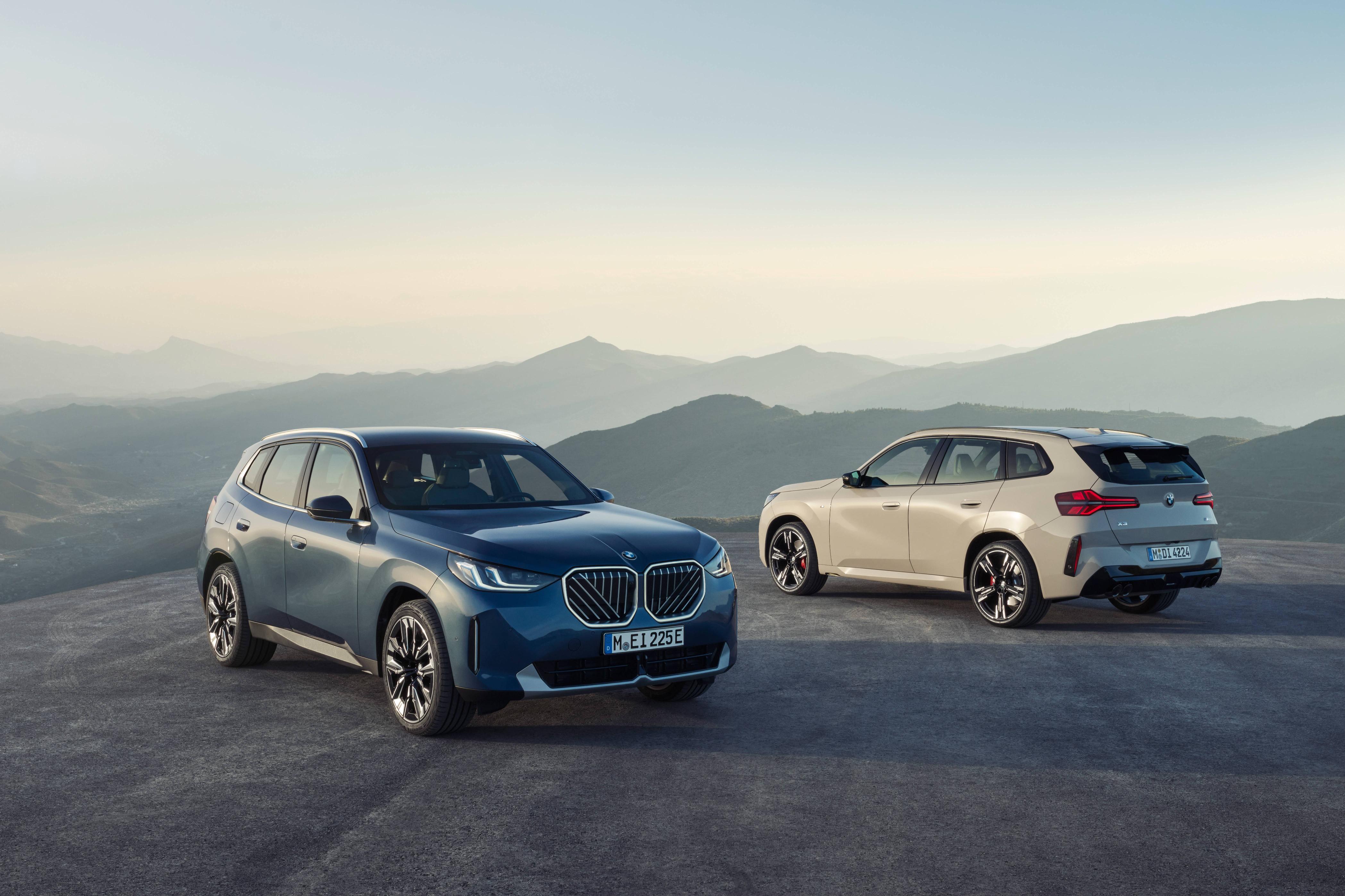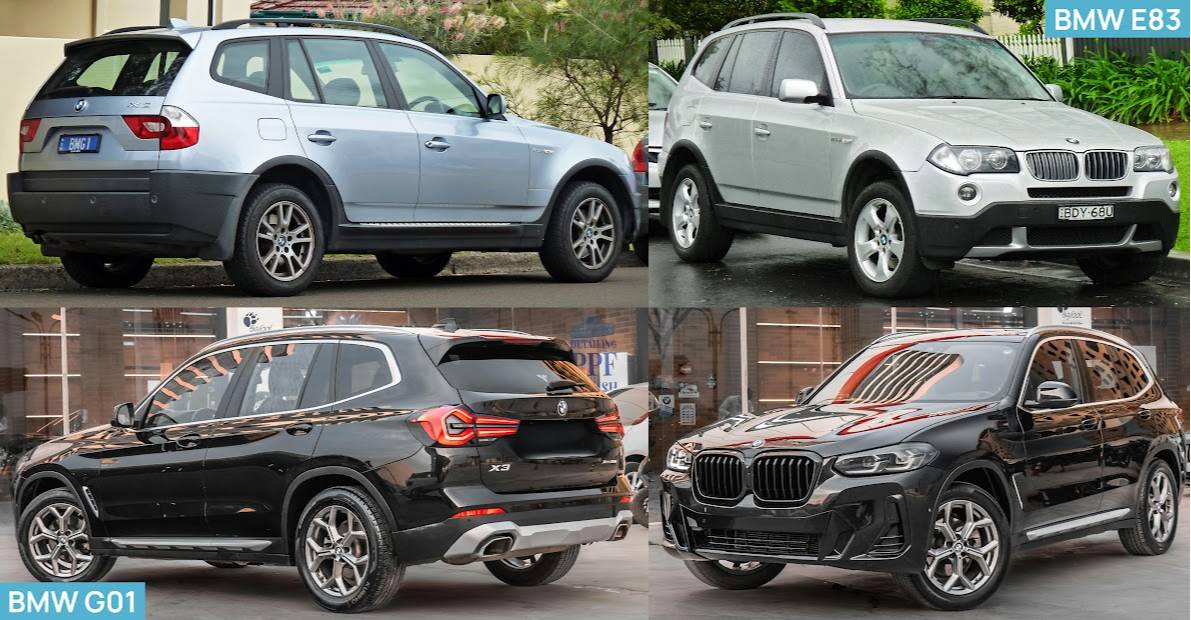[[post.title]]
We're changing for you!
Check out our new website
We're changing for you!
Check out our new website
Jul 22, 2025

Ready to dive into the world of BMW's most versatile compact SUV? The BMW X3 isn't just another luxury crossover – it's the goldilocks of the BMW lineup that has mastered the art of being just right. Whether you're navigating tight city streets or carving through mountain passes, the X3 proves you don't need flagship dimensions to deliver flagship performance.
Coming up, we’ll learn:
Enjoy the reading!
The BMW X3 arrived in 2003. It was BMW's answer to a simple question: “Can we shrink the X5's capabilities into a more manageable package without losing its appeal?” Built on the success of its larger sibling, the X3 pioneered the segment long before "compact luxury SUV" became marketing speak for "an expensive small car with a lift kit."

Originally produced in partnership with Magna Steyr in Austria, the first-generation E83 BMW X3 proved that downsizing didn't mean downgrading. The X3 quickly became a sales success, moving over 600,000 units in its first generation alone. Not bad for a vehicle some critics initially dismissed as an overpriced wagon on stilts.
Today, the X3 competes in one of the most crowded segments in automotive history. It faces off against the Mercedes-Benz GLC, Audi Q5, Genesis GV70, and a host of other alphabet soup challengers. Yet it continues to outsell most rivals, proving that being first to market with the right formula still counts for something in the automotive world.
The BMW X1 and X3 might share similar styling cues, but they're very different, their size representing the most obvious distinction. The current-gen BMW X1 (U11) is approximately 177.2 inches long, making it exactly 10 inches shorter than the G45 BMW X3 (187.2 inches long). It’s also lower (64.6 vs. 65.4 inches) and narrower (72.6 vs. 75.6 inches). This translates to noticeably more rear-seat legroom and cargo capacity in the X3 – 31.5 vs. 25.7 cubic feet in the BMW X1.
Another thing that separates these models is their performance. While the BMW X1 makes do with only four-cylinder B48 engines across the board, the X3 offers a slightly wider choice of powertrains. Namely: two different engines, instead of just one (oh, how the automotive industry has fallen…). The same fuel efficient four-banger (albeit tuned differently) and a more powerful, refined B58 inline-six in the M Sport variant.
Thirdly, there is the matter of weight, related to both the dimensions and the engine-transmission combinations present in the two designs. The base curb weight for the BMW X3 starts at 4,176 lbs; the X1 can weigh as little as 3,750 lbs.
The last aspect that separates the two is deeply technical in nature and hardly noticeable, especially in everyday driving (or functional) conditions. While the BMW X3’s drivetrain is based around a longitudinal layout, the BMW X1 (U11) has its engine mounted transversely. This primarily affects the vehicle balance, but it also has some ramifications in terms of how power is distributed.
Despite the same “xDrive” badge being present on both of these vehicles, their all-wheel drive systems will behave slightly differently. The one in BMW X3 is rear-wheel-biased and that of the BMW X1 is front-wheel-biased, which means the former will be more prone to oversteer and the latter – to understeer.
TL;DR: if you want to be able to do perfect donuts in a snowy (or not) parking lot, you’ll have to go for the BMW X3. Otherwise, if you don’t care about that stuff, the X1 should also do fine and it will definitely reward you with a better fuel economy.
It’s size, again. And the array of features, to some extent.
The BMW X5 stretches to 194.2 inches in length (vs. BMW X3’s 187.2 inches), but those 7 inches make a world of difference. The X5's larger platform enables its cargo area to beat that of the X3, offering up to 33.9 cubic feet of luggage space. This comes with extra weight, however, affecting both performance and fuel economy.
Engine options further differentiate these models. While both offer capable powertrains, the X5 provides access to V8 engines that deliver supercar-rivaling acceleration in a family-friendly package. That being said, the BMW X3 tops out at inline-six option that provides plenty of thrust without the V8's thirst for premium fuel.
Want to learn more about the X3’s larger sibling? Read our comprehensive BMW X5 guide that covers everything from its revolutionary debut to current variants.
The current G45 generation of the BMW X3 looks pretty slim in terms of available variants, especially compared to the previous G01 generation. As of right now (July 2025), there are only three drivetrain versions on the market:
If you’ve got a keen eye and know a thing or two about the previous BMW X3 generation, you might have noticed a couple of changes in the entire lineup. First of all, there are neither the X3 20i nor any sDrive (rear-wheel drive) versions. While the non-AWD variants have completely disappeared from the X3 range, the successor to the 20i (less powerful 2.0 L) is still available in different worldwide markets, like the EU.

Second, there is no “i” in the X3 30 listed above – no, that’s not a mistake. For 2025, BMW has completely dropped the “i” designation in their models. They say it’s to further differentiate the gasoline models from hybrids and Diesel ones, while keeping the “i” exclusively for their EV cars.
Third, there is no “M Competition” version listed, which is also not an accident. Unfortunately for the fans of the high-performance version of the BMW X3, the rumored G97 will not come. Anyone wanting a sporty, compact Bavarian SUV will have to either get BMW X1 M35i (313 hp, 295 lb-ft of torque) or the abovementioned BMW X3 M50.
Check out the table below for a quick rundown of the G45 BMW X3 variants.
| Model | Engine | Power | Torque |
| xDrive30 | 2.0 L turbo I4 | 255 hp | 295 lb-ft |
| xDrive30e | 2.0 L turbo I4 + EV motor | 295 hp | 332 lb-ft |
| X3 M50 | 3.0 L turbo I6 | 393 hp | 428 lb-ft |
The BMW X3's reliability story reads better than most German luxury vehicles. Modern X3s, particularly the current G01 generation, have addressed many demons that plagued earlier models. The turbocharged B48 and B58 engines have already proved themselves to be surprisingly robust when properly maintained. Similarly, the ZF eight-speed automatic transmission has earned praise for both smoothness and durability.

However, the case is slightly different for the older models and there are some quirks you should be aware of. Common issues to monitor include:
For a comprehensive breakdown of what can go wrong and when on the BMW X3 of the E83 generation, check out our detailed video below. It covers the most common X3 problems and their solutions:
The BMW X3 versus Audi Q5 debate has raged since both vehicles hit the market and like most automotive rivalries, the answer depends on your priorities. The BMW X3 delivers superior driving dynamics, with sharper steering feedback and more engaging handling characteristics. The Q5 counters with a plusher ride quality that many buyers prefer for daily commuting.
BMW's engines also outclass Audi's offerings in both reliability and—this one’s subjective—sound quality. To our ears, even the plain old four-cylinder B48 sounds slightly better than the equivalent 2.0 TFSI powerplant in the Audi Q5. It’s got a bit more bass and the pleasant, sporty raspiness to it.
While the 2.0 Audi Q3 has slightly better performance than the BMW X3 xDrive30 (268 hp, 5.8 seconds to 60 mph), the BMW X3 M50 edges out the Audi SQ5. Bavarians offer 31 hp more and a 0.2 second quicker 0–60 time.
There is also the matter of transmission: the good-old Quattro all-wheel drive system has earned a reputation for unflappable winter performance, but the Q3 uses a “predictive” Quattro Ultra system. It basically means that sometimes the rear axle will disconnect completely to improve fuel efficiency. Depending on the road conditions, the ECU will decide if the rear axle is needed and, in theory, activate it before it’s needed.
Last but not least, let’s talk about the interior. According to user reviews on the Internet, Audi’s interior materials can feel slightly worse, particularly in lower trim levels. The Q5 also offers better value though, typically undercutting equivalent BMW X3 models by several thousand dollars.
The BMW X3 provides an excellent foundation for personalization and future upgrades, whether you're chasing better performance or enhanced comfort. Or if you simply want the tech that BMW should have included from the factory.
Since we are somewhat of the BMW upgrade specialists with a modest decade of experience, we’d like to take this opportunity to make some recommendations for you.
Adding Apple CarPlay can transform the older X3's infotainment experience, especially for iPhone users tired of BMW's native iDrive interface. Our CarPlay activation coding unlocks this functionality in compatible vehicles, while our complete CarPlay retrofit solutions bring this convenience to older models that missed out on such factory options.
For detailed compatibility information and installation guidance, our comprehensive CarPlay for BMW X3 guide walks through everything you need to know.
The standard BMW audio systems have usually delivered acceptable sound quality, but "acceptable" shouldn't be the goal in a luxury vehicle. Our Alpha One BMW Speaker Upgrades and Amplifiers completely overhaul the X3's acoustic environment without requiring extensive modifications or losing valuable cargo space.
These fully plug-and-play solutions maintain factory aesthetics while delivering Hi-Fi studio quality. Installation typically takes under two hours, as demonstrated in our detailed (G01) BMW X3 audio upgrade installation guide.
What’s even greater is the concierge-grade aftersales support you’ll be getting by choosing us; both in terms of the installation and the DSP tuning. Because we always aim to get you the most personalized sonic experience possible ;)
It offers genuine driving enjoyment without sacrificing practicality and delivers luxury without excessive ostentation. While reliability concerns and maintenance costs remain part of the ownership equation, the current generation has largely addressed the horror stories that plagued earlier models. For buyers seeking a do-everything luxury SUV that actually does everything well, the X3 makes a compelling case.
Modern X3s show improved reliability over earlier generations, particularly post-2018 models. Regular maintenance remains crucial for long-term dependability.
Yes, all U.S.-market BMW X3 models come standard with xDrive all-wheel drive for enhanced traction and stability.
The 2024 BMW X3 starts at $48,500 for the base xDrive30i, ranging up to $81,900 for the M Competition variant.
BMW manufactures the X3 at their Spartanburg, South Carolina plant for global distribution, with additional production in Rosslyn, South Africa.
With proper maintenance, BMW X3s regularly exceed 150,000 miles, with many examples reaching 200,000+ miles.
Electric water pump failures and oil leaks represent the most frequently reported issues, particularly on pre-2018 models.
The battery is located in the cargo area under the floor panel on the right side, not in the engine bay.
Press the button on the left side of the steering wheel showing a car between two lines, or disable it through iDrive settings.
Yes, the X3 consistently ranks among the best luxury compact SUVs for its blend of performance, practicality, and technology.
Customer Reviews
Comments
Rate the product
This email is already registered.
Please Log In to continue.
Let us find
the right version for you
We'll confirm pricing, compatibility and product details for your car:
Enter your VINModern X3s show improved reliability over earlier generations, particularly post-2018 models. Regular maintenance remains crucial for long-term dependability.
Yes, all U.S.-market BMW X3 models come standard with xDrive all-wheel drive for enhanced traction and stability.
The 2024 BMW X3 starts at $48,500 for the base xDrive30i, ranging up to $81,900 for the M Competition variant.
BMW manufactures the X3 at their Spartanburg, South Carolina plant for global distribution, with additional production in Rosslyn, South Africa.
With proper maintenance, BMW X3s regularly exceed 150,000 miles, with many examples reaching 200,000+ miles.
Electric water pump failures and oil leaks represent the most frequently reported issues, particularly on pre-2018 models.
The battery is located in the cargo area under the floor panel on the right side, not in the engine bay.
Press the button on the left side of the steering wheel showing a car between two lines, or disable it through iDrive settings.
Yes, the X3 consistently ranks among the best luxury compact SUVs for its blend of performance, practicality, and technology.
Customer Reviews
Comments
Rate the product
This email is already registered.
Please Log In to continue.
[[comment.name]]
[[comment.text|raw]]
BimmerTech
Newsletter
[[comment.name]]
[[comment.text|raw]]
BimmerTech